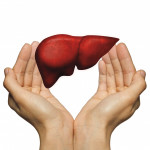An analysis of two Gilead-sponsored studies suggests that black HIV-positive patients are more likely to maintain undetectable viral loads for nearly two years using treatment regimens containing Viread® (tenofovir) compared to those containing the thymidine analogues Retrovir® (zidovudine) or Zerit® (stavudine). Black patients receiving Viread in the studies also had lower cholesterol and triglyceride increases than those taking the other nucleoside reverse transcriptase inhibitor (NRTI) options.
Long-term follow-up data from clinical trials of antiretrovirals and various drug combinations have been considered valuable in terms of knowing what to expect from treatment, in terms of efficacy and side effects, over an extended period of time. Unfortunately, very little data has been reported regarding the long-term safety and effectiveness of treatment in various populations of HIV-positive people, including racial minorities.
At the 14th Conference on Retroviruses and Opportunistic Infections (CROI), a small team of investigators reported a “subset analysis” of two long-term clinical trials comparing regimens containing Viread to those containing the thymidine analogues Retrovir or Zerit.
The data included in the subset analysis were from Gilead studies 903 and 934. In study 903, antiretroviral-naïve patients – HIV-positive people beginning therapy for the first time – took Sustiva® (efavirenz) plus Epivir® (lamivudine) with either Viread of Zerit for a total of 144 weeks. Study 903 enrolled 20% black patients.
In study 934, antiretroviral-naïve patients took Sustiva plus Combivir® (Retrovir plus Epivir) or Viread plus Emtriva (now available as Truvada® or, with Sustiva, as Atripla™). Study 934 is still ongoing and, like study 903, will follow patients for a total of 144 weeks. Study 934 enrolled 23% black patients.
The subset analysis reported at CROI involved 125 black patients who took Viread in both studies, compared to 103 “control” black patients who took the other NRTIs in both studies. The data reported involved 96 weeks of follow up in the studies.
Among the black patients included in the subset analysis, the majority were male, approximately 35 years of age at the time they entered the study, and had average pre-treatment viral loads of 75,000 to 100,000 and CD4 counts of 215 to 245.
Approximately 31% of the Viread-treated patients, compared to 45% of the patients receiving other NRTIs, permanently discontinued treatment prior to week 96. This difference was statistically significant, meaning that they weren’t due to chance. Rates of adverse events, loss to follow-up, suboptimal virologic response, noncompliance, and pregnancy were similar between the two groups.
As for viral load reductions at week 96, 65% of the Viread-treated patients and 48% of the control patients had viral loads below 400. Similarly, 61% of those in the Viread groups combined, compared to 43% of those in the control groups, had viral loads below 50 (undetectable). These differences were statistically significant and suggest significantly greater virologic suppression among black patients taking Viread compared to those using either Retrovir or Zerit.
A shortcoming of the CROI presentation was that it didn’t include a comparison between the virologic responses in the black patients and those seen in the complete analysis of all patients enrolled in the studies. According to 96-week data involving all patients enrolled in study 903, reported at the 10th CROI in 2003, 78% in the Viread/Epivir group and 74% in the Zerit/Epivir group had viral loads below 50, with no significant differences between the two groups. As for the 96-week data involving all patients enrolled in study 934, published in a December 2006 issue of the Journal of Acquired Immune Deficiency Syndromes, 67% in the Viread/Emtriva group and 61% in the Combivir group had viral loads below 50, with no significant difference documented.
According to Johns Hopkins University School of Medicine’s Joel Gallant, MD, the lead author of the subset analysis, an official comparison of the results among black and non-black patients enrolled in studies 903 and 934 is being performed, but wasn’t ready in time for this year’s CROI.
Average CD4 count increases in the subset analysis, from the start of the study to week 96, were 267 cells in the Viread groups and 233 in the control groups. This difference was not statistically significant.
Kidney function in the black study participants was similar between the groups and remained stable through 96 weeks of follow up.
Also of interest were differences between the groups with respect to metabolic parameters. Total cholesterol increased by 37 mg/dL in the control-treated patients, compared to a 21 mg/dL increase in the Viread-treated patients. Triglycerides increased by 59 mg/dL in the control-treated patients, compared to a 1 mg/dL increase in the Viread-treated patients. These differences were statistically significant. Moderate increases in “good” HDL cholesterol, as well as “bad” LDL cholesterol, were similar in both groups.
As for limb fat measurements – a marker of possible lipoatrophy – there was a greater average volume of limb fat in 49 Viread-treated patients after 96 weeks (11 kg), compared to 38 control-treated patients (8 kg), although this difference was just shy of statistical significance. In the all-patient analyses of studies 903 and 934, statistically significant differences in limb fat at week 96 were reported, both in favor Viread over thymidine analogues.






Comments
Comments